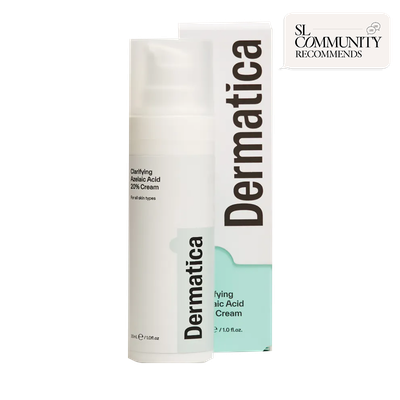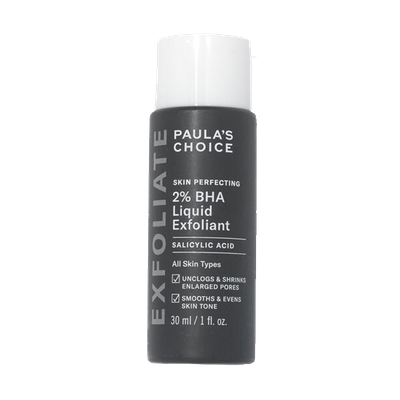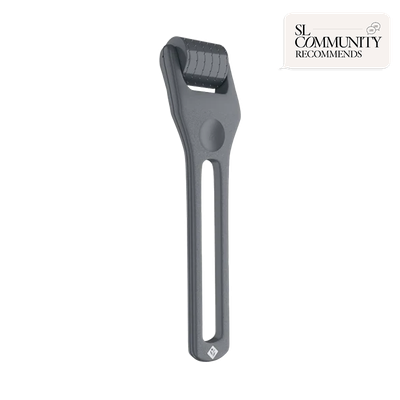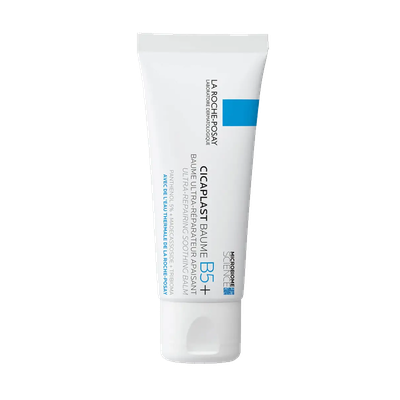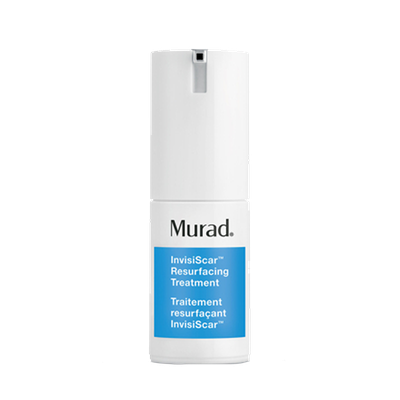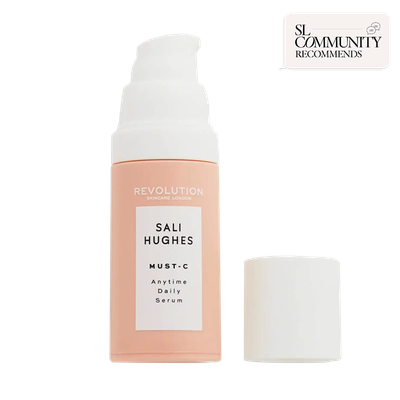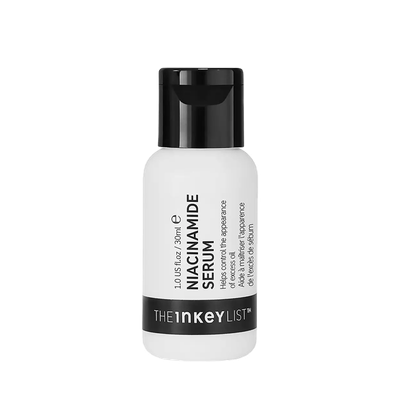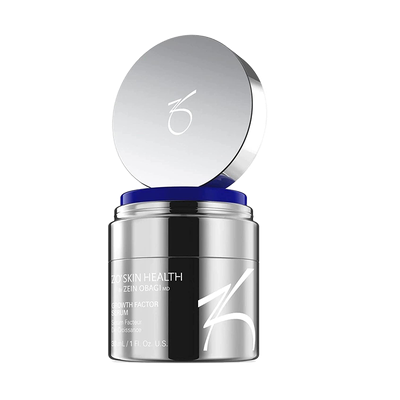
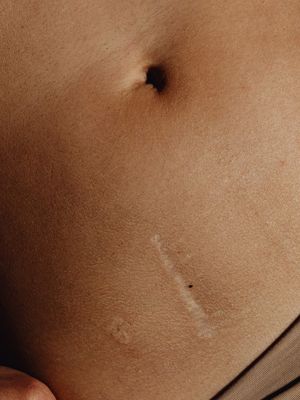
A Complete Guide To Treating Scars
All products on this page have been selected by our editorial team, however we may make commission on some products.
Remember We’re All Likely To Scar
“There are many causes of scarring and it’s likely most of us have at least one or two. Wounds, injuries, acne, medical procedures, infections and even genetics can all lead to scarring on either your face or body, as can conditions like chickenpox and shingles – even insect bites can lead to scarring. Scars form as part of our bodies natural healing process when the skin’s deeper layers are affected. The type and appearance of the scar will depend on the cause, but also the individual’s healing response.” – Dr Thuha Jabbar, aesthetic doctor & founder of Almas Aesthetics
“Scars are a testament to the body’s resilience and ability to heal itself – I wish more people would acknowledge this. While complete removal isn’t always possible, there are many treatments that can significantly improve the look of various scars. Scars often lie deep in the skin, so if you are seeking treatment, you have to be patient. It can take time to see results. Always seek advice from a dermatologist who will set you on the right path and provide personalised guidance for the best treatment and approach.” – Amanda Azzopardi, founder of Amanda Azzopardi Aesthetics
Know The Difference
“People often confuse scars with general skin imperfections and bumps. Scars will always be thicker and have a different texture compared to your regular skin. That said, what is hard to differentiate is which scar means what. Each one can really differ and requires a unique approach when it comes to treatment.” – Lucy Xu, founder of Premier Laser Clinics & skin specialist
Understand Each Type
Debbie Thomas, skincare specialist & founder of D.Thomas Clinic, explains the difference between various types of scar…
Mature
“These are the scars which have fully formed and are in their permanent state. Typically, they occur between three months to two years after injury. It’s worth noting all scars can take six to 18 months to develop – in this timeframe, they can change considerably. Mature scars are often paler, flatter and softer than other types of scarring.”
Hypertrophic
“You’ll find this type of scar feels tougher than other areas of skin and is slightly raised – normally by about 0.5-2mm. It can feel and look waxy, and it’s often a different colour to the surrounding skin. This scarring is formed when the skin is overactive in its repair process, creating a clumping of too much new tissue.”
Keloid
“This is a more extreme version of hypertrophic scarring. Hypertrophic scars occur when the trauma is significant, meaning it may only happen once or twice on a person. Keloid, however, shows a real issue with the overall healing process. It is permanently on overdrive, so not only are the scars always very raised and discoloured, those who are prone will get lots of them. A keloid scar can come up weeks or months before the injury has healed and will normally be much bigger than the original wound. They can be raised by a centimetre or more and they often feel softer. Darker skin tones can be more prone to these types of scars.”
Atrophic
“If your scars dip down, creating a crater appearance, they are likely atrophic. These happen when the healing process is underactive and doesn’t produce enough tissue to refill the wound. There are several examples of this type of scarring. You have ice pick scarring which can look like enlarged pores – they have a tiny opening but are quite deep. Then there is box scarring which looks as if someone has used a cookie cutter – the walls of the scar are often sharped and defined. For rolling scars, they have a defined bottom, but the sides slope in so they look less aggressive than box scars.
Contracture
“Contracture scars occur when a large area of skin is damaged. As the wound heals, the scar tissue develops differently in terms of its texture. Normally they look waxy and feel tough, but the main issue – and difference – is that the scar almost becomes smaller than the wounded area, so the skin pulls and feels tight.”
Immature
“These are new scars that are days or weeks old. They tend to be pink and a little swollen. Only time will tell if they become one of the above or if the skin will flatten back out and blend in over time.”
Tweak Your Lifestyle Habits
“The severity and appearance of your scar can be heavily influenced by lifestyle habits. If your immune system is low, you won’t heal as effectively and this can contribute to a scar that’s deeper than if you were at your healthiest. One thing I say to all my patients is to cut back on smoking. It reduces the amount of oxygen in your body, so all wounds heal slower and you’ll be far more likely to have longer-term textural issues. Likewise, never scratch or pick your scar. A clean-edged wound will knit together nicely. If you open it or keep picking, it will result in a ragged tear that can become quite large and potentially infected.” – Debbie
“I also recommend applying sunscreen to your scar. While you shouldn’t actively expose it to UV, keeping it protected will ensure your skin stays strong and supple. UVA rays will only break skin down – you need it to stay elasticated for optimum healing. This goes for both the face and body.” –Thuha
Incorporate Some Self-Massage
“When you have an immature (new) scar, I recommend using silicone gel patches to help stabilise the healing process. We’ve found that when you reduce the inflammation of the wound early on, it heals better as time passes. On top of using gels, self-massage can be beneficial in the early days. Don’t tug or pull skin, but gentle movements to stimulate blood flow – both on the face and body – can reduce inflammation and speed up healing.” – Debbie
“Self-massage will help remodel your collagen levels within the skin. In other words, it can only be a good thing, especially when it comes to reducing the appearance of a scar. On top of this, I recommend taking a collagen supplement to further strengthen skin and to boost your immune system.” – Amanda
Don’t Dismiss Topical Remedies
“There are some over-the-counter and prescription products that can help fade scarring. Look out for products that contain vitamin C, alpha hydroxy acids (AHAs), retinoids and growth factors. These ingredients help promote collagen production while also exfoliating the skin to improve its texture. That said, products alone aren’t enough. This is because none contain enough active ingredients to break down scar tissue, soften and reduce it. Prescription, medical-grade skincare can be more effective, which is why it’s key you speak to a professional who can prescribe you the exact remedies you need.” – Amanda
“Hyaluronic acid (HA) should be in all the products you use because studies show drier skin heals less optimally. HA will help bolster your moisture levels and keep skin soft and smooth, making any scarring appear less jagged.” – Debbie
Research Your Treatment Options
“Some scars can reduce and blend in on their own – however, it’s worth knowing the majority will never fade completely. That said, a combination of treatments can completely minimise the appearance of scars on the face and body. That includes lasers, peels, microneedling and filler. The idea is to re-wound the area but in a controlled way. When we do these types of procedures, we stimulate the skin in this area and boost the regeneration process. Of course, everyone differs, which is why you need a full assessment of your skin before proceeding with treatments, but the good news is that those on offer really do yield results. Red light therapy is especially impressive – I really rate the Byonik Cold Laser.” – Debbie
“Dermabrasion is great for reducing scars and improving skin texture, while cryotherapy can also benefit the skin by ‘refinishing’ the top layers of your skin for a smoother, refreshed appearance. Any of the above treatments will improve the appearance of your scar, but you do need to be consistent and make regular appointments.” – Amanda
Final Notes To Take Away…
“I’m often asked about costs of scar treatments. Yes, they can be expensive, but you can consider different options with your treatment provider. Anything too cheap or questionable should be avoided – you’ll only have to pay to reverse any damage. Clinics offer wider packages now with deals and discounted rates for multiple treatments. It’s worth using medical-grade skin companies like GetHarley. They price match everything, so you know you are receiving the correct ingredients and treatments at the best possible cost.” – Amanda
“My final advice would be for those with keloid scarring. This is the hardest type to treat because any stimulation of the area will trigger more healing – this just triggers the keloid process again. It can be a vicious circle. There are some experts in keloid reduction, but my advice is to proceed with caution and get several opinions before moving forward. For those concerned about acne scarring specifically, know that it’s usually not caused by picking. In fact, the scarring comes from infection and trauma above anything else, so keep your breakouts as clean as possible. If the appearance of your skin is really troubling you and you’re unable to afford treatments, I can’t recommend Oxygenetix Foundation enough. It’s the best for covering scars, inflammation and uneven tone. You can use it on the body, too.” – Debbie
Considering scar treatments? Seek out these names for professional advice:
- Debbie Thomas, DThomas.com
- Justine Kluk, DrJustineKluk.com
- Lucy Xu, LondonPremierLaser.co.uk
- Alexis Granite, DrAlexisGranite.com
- Dija Ayodele, WestroomAesthetics.com
- Ariel Haus, DrHausDermatology.com
- Anjali Mahto, SelfLondon.com
Shop Our Edit Of The Best Skin-Healing Products
DISCLAIMER: We endeavour to always credit the correct original source of every image we use. If you think a credit may be incorrect, please contact us at info@sheerluxe.com.
